
Treadmill Buying Guide

Senior Health & Food Reporter
One of the best ways to exercise more is to make it easier to work out. If you’re interested in running, a treadmill can make it simple to do so in your own home with no need to worry about going to a gym or facing inclement weather of any kind.
Thanks in part to the recent popularity of virtual fitness classes, many treadmills have gotten smarter, offering sleek integration with interactive workouts.
But innovation isn’t cheap: A top-rated treadmill can cost a steep $3,000 or more. Fortunately, if you’re willing to make some trade-offs, you can find some high-end features on less expensive models, too. And CR has recommended treadmills with more basic features at less than half that price.
Treadmill Types
Motorized treadmills all share the same basic design: a moving belt powered by an electric motor. Here are a few basic configurations that you’ll need to choose from when you’re deciding on a treadmill.
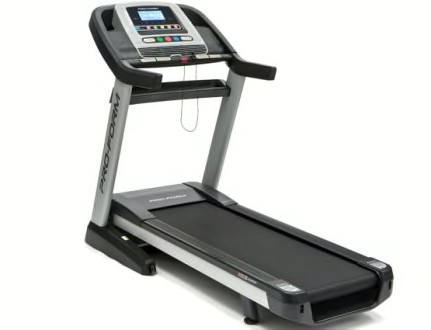
Folding Treadmills
Folding treadmills get their name from the fact that you can fold up the running surface between the handlebars so that it can be stored in a smaller amount of space. (The running surface will be close to perpendicular with the floor.) There’s a wide variety of folding treadmills available. Many of the less expensive models are smaller, so they generally have shorter decks, which may make them better for walking than for running. Still, many of our recommended folding treadmills are fully featured and adequate for runners as well as for walkers, with a range of exercise programs, incline options, and sizes.
Pros: You can get a fully featured folding model that may still help you save a little space. And because many models also have wheels, they’re often easier to move. Nonfolding treadmills are generally heavier and may require two people to move.
Cons: The deck on some models may be too short for runners with a longer stride, and folding treadmills generally have lower weight limits than nonfolding models. Also, while folding up the treadmill may save some space, some models still have a fairly large footprint even when folded. If you’re storing your treadmill in a basement or attic or somewhere with lower-than-average ceilings, keep in mind that it can actually be taller once it’s folded up due to the long running board. So note the height of the treadmill when folded and make sure you’ve got enough clearance to store it.
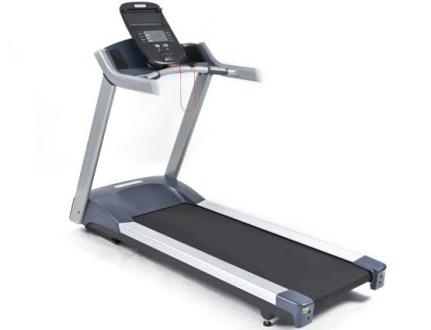
Nonfolding Treadmills
These treadmills offer a sturdier deck and frame, a longer running belt, and a larger running surface.
Pros: These are the best choice for frequent runners and are constructed of heavier, more robust materials. Integrated heart rate control programs, higher max speeds, and steeper max inclines are typical. They generally come with the longest warranties.
Cons: It may seem odd, but these pricey models sometimes have fewer built-in programs. And of course, they’ll take up more space.
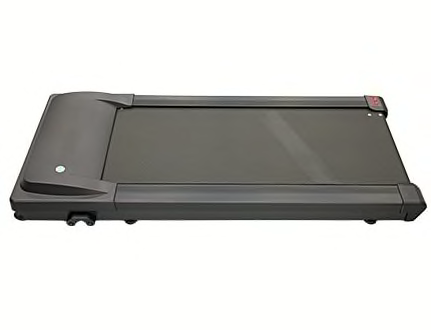
Under-Desk Treadmills
Under-desk treadmills, aka walking pads, are very basic, lightweight treadmills. They typically have a limited display and no adjustable incline, and are designed solely for walking. (Some go up to speeds of 7.5 mph, but given the short decks, these running speeds weren’t safe for our testers to try out.) Their portability and low footprint can make them very appealing to people who spend hours working at desks and would like to have less sedentary time in the day.
Pros: These are simple machines that are easy to use and typically don’t require assembly. They also tend to have a smaller footprint—even smaller than most folding treadmills—and may be easier to store in small spaces.
Cons: Our tests of these products have found that many have safety problems or issues with cheap construction or poor build quality. Many are made by lesser-known manufacturers without a history of treadmill manufacture and might not have good support options if something goes wrong. We’ve only found a few that we recommend, and—unlike many of the walking pads we tested—our top-rated model is very similar to a traditional treadmill in size and price.
For these reasons, our testers advise consumers to be wary of these products. Though there are many inexpensive options, they might not last long enough to boost your long-term fitness. If you’re looking to save money, consider buying a secondhand treadmill instead.
Considering Connectivity
When you’re buying any new piece of exercise equipment these days, you also may be choosing an exercise subscription service designed to work with the machine. These subscription services usually come with a (sometimes hefty) monthly cost on top of whatever you pay for your treadmill.
A classic example is Peloton: Technically, you could run on a Peloton treadmill without signing up for Peloton’s service. But you’ll get only the most basic functionality, and you won’t get access to what is arguably Peloton’s biggest selling point—its wide array of live classes, workouts that automatically sync to adjust your machine’s speed and incline, and more. But Peloton’s monthly membership fee is $44, which means paying $528 per year for those features after spending $2,700 or more for one of its treadmills.
For consumers, the shift to subscription-based workout machines means that increasingly, you’ll need to take extra care before you buy a new treadmill to make sure you know what options—or lack of options—your machine will have out of the box and how much extra you’ll need to pay to unlock all of its features. Here are the three main possibilities you’ll encounter:
Your machine will work exclusively with just one exercise subscription. Peloton is probably the best-known example of this; on Peloton machines, you can only connect to Peloton’s workout subscription service. But treadmills made by NordicTrack and ProForm also fall into this category because they can be used only with a subscription to iFit ($39 per month for iFit Pro, the subscription tier required for NordicTrack or ProForm treadmills with integrated touch screens), another platform providing a large library of on-demand exercise programs that automatically adjust your machine’s speed and incline to match the workout. Unlike Peloton, these subscriptions don’t come with live classes.
Your machine will work with a variety of different exercise subscription services. Some treadmills can be synced with more than one service that can automatically adjust your speed and incline to match a preprogrammed workout.
Some non-Peloton treadmills, for example, can still sync with Peloton workouts if you purchase a monthly subscription. There are also workout subscriptions that are designed to be device agnostic from the ground up, like Kinomap, which provides user-generated runs through real-world locations, or Zwift, which offers runs through virtual reality settings.
Depending on the treadmill, you may be able to connect with one of these apps directly on the machine’s touchscreen, or you may need to pair it with another device, like a tablet or a smartphone, and use that device to run the workout app.
Treadmill brands Horizon, Sole, Spirit, and Xterra are a few that offer connectivity with a variety of workout subscription apps. Others, like Bowflex, offer connectivity with certain apps (Peloton and Zwift, in Bowflex’s case) but also offer their own subscription service that they market heavily (for Bowflex, that’s JRNY).
Your machine is self-contained and doesn’t offer connectivity with on-demand workout subscriptions. Plenty of treadmills still work the old-fashioned way: They come with a variety of workouts that are programmed into the machine itself, which are accessible without connecting to any apps. While you may have less variety to choose from, the big benefit with this option is that once you pay for your treadmill, there are no additional monthly costs. Built-in programs also tend to automatically adjust your speed and incline as the program progresses—you just won’t have the additional video of the landscape you’re virtually running through. Landice, True, and Lifespan are a few of the companies with treadmills that aren’t designed to be used with an exercise subscription.
Shopping Advice
With any exercise equipment, if it’s at all possible, it’s best to try it out before you make your decision. Here’s our try-before-you-buy checklist:
• Does the cushioning and shock absorption of the running deck feel comfortable?
• When you walk or run, do your feet hit the motor housing?
• Can you easily straddle the deck when standing on the side rails?
• Is the display monitor easy to read?
• Are the controls easy to reach and operate?
Whether you’re shopping in person or online, here are other key factors to keep in mind.
Size: Most treadmills have a similar footprint—on average, 77 inches long by 35 inches wide. While folding treadmills can help you save some space, many of the sturdier and higher-rated ones still have a fairly large footprint. Plus, you’ll need adequate empty space around the treadmill (at least 2 feet on either side and at least 6 feet at the back) for access and safety when it’s in use. Before you purchase a treadmill, be sure to measure the space you have set aside for it to make sure you have enough room to use it safely.
Your fitness goals matter here, too. Consider whether you plan to use the treadmill for running, some running and some walking, or only for walking. If you’ll be running on your machine, then you’ll need a longer running surface to accommodate a running stride. But if you’re a walker, you may be able to find an especially good deal. Some less expensive models that don’t work for runners may be perfectly suitable for people who plan to use the machine only for walking.
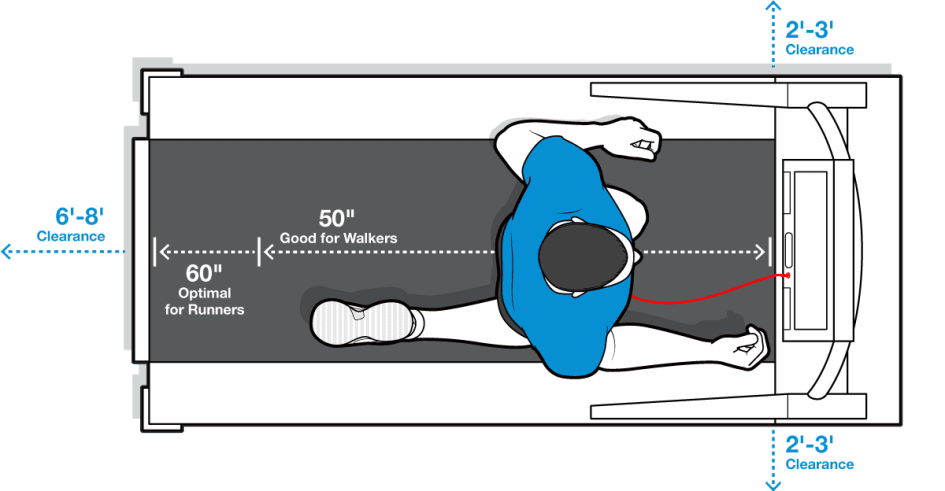
Budget. Investing in a more expensive machine gets you sturdier construction, a longer parts warranty, a larger running surface, higher top speeds, and steeper inclines. But if your goals don’t include serious training and you don’t need all the latest flashy features, you’re likely to be just as satisfied with a less expensive model.
Adjustability. Most treadmills have top speeds between 10 and 12 mph; some will go faster. They typically incline between a 10 and 15 percent grade, but some offer an increased gradient. Try out a treadmill at a gym or a store to see how you like to adjust the speed and incline, and check that the treadmill you’d like to purchase can be adjusted to fit your preferences.
Weight and assembly. Treadmills are heavy, so ask about delivery. Check whether assembly, tricky even for experienced DIYers, is included or available at an additional cost.
Warranty. When it comes to the warranty, look for three to seven years of coverage on parts and at least one year on labor. Most treadmills have a lifetime warranty on the frame, and you should get that for the motor as well.
Returns. Confirm the store’s return policy. Even if it will take back the treadmill, you might have to pay for the store to retrieve it, and you might be charged restocking fees. If you purchase online, find out how return shipping is handled.
Other Treadmill Features to Consider
- 1
- / 5
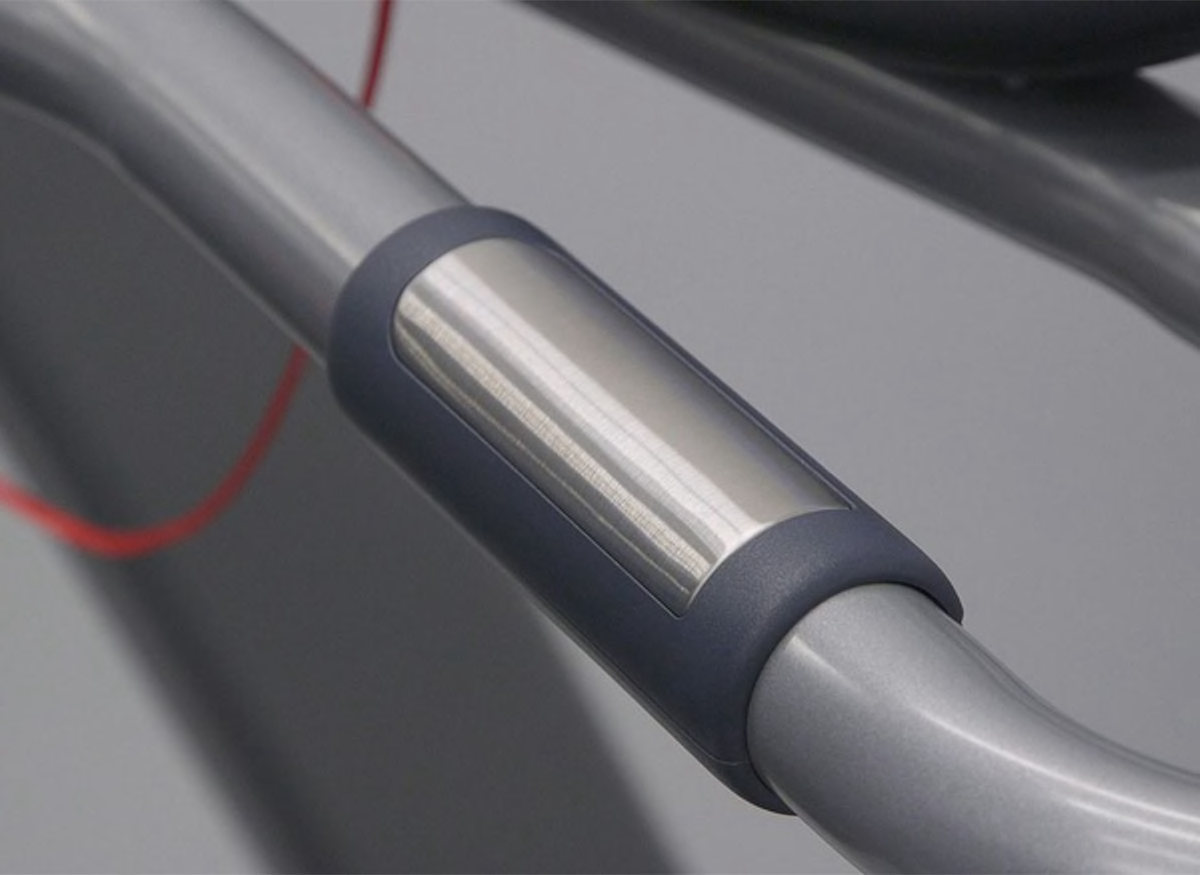
Heart Rate Monitor
A chest strap heart rate monitor is typically not included with treadmills that cost less than $1,000, though most treadmills usually have a handgrip heart rate monitor. A chest strap monitor is convenient, can give you a more accurate and consistent reading than hand grips, and allows you to monitor your heart rate without having to reach for the hand grip sensors. While a heart rate monitor helps you track the intensity of your exercise, don’t rely on it for reliable medical info.
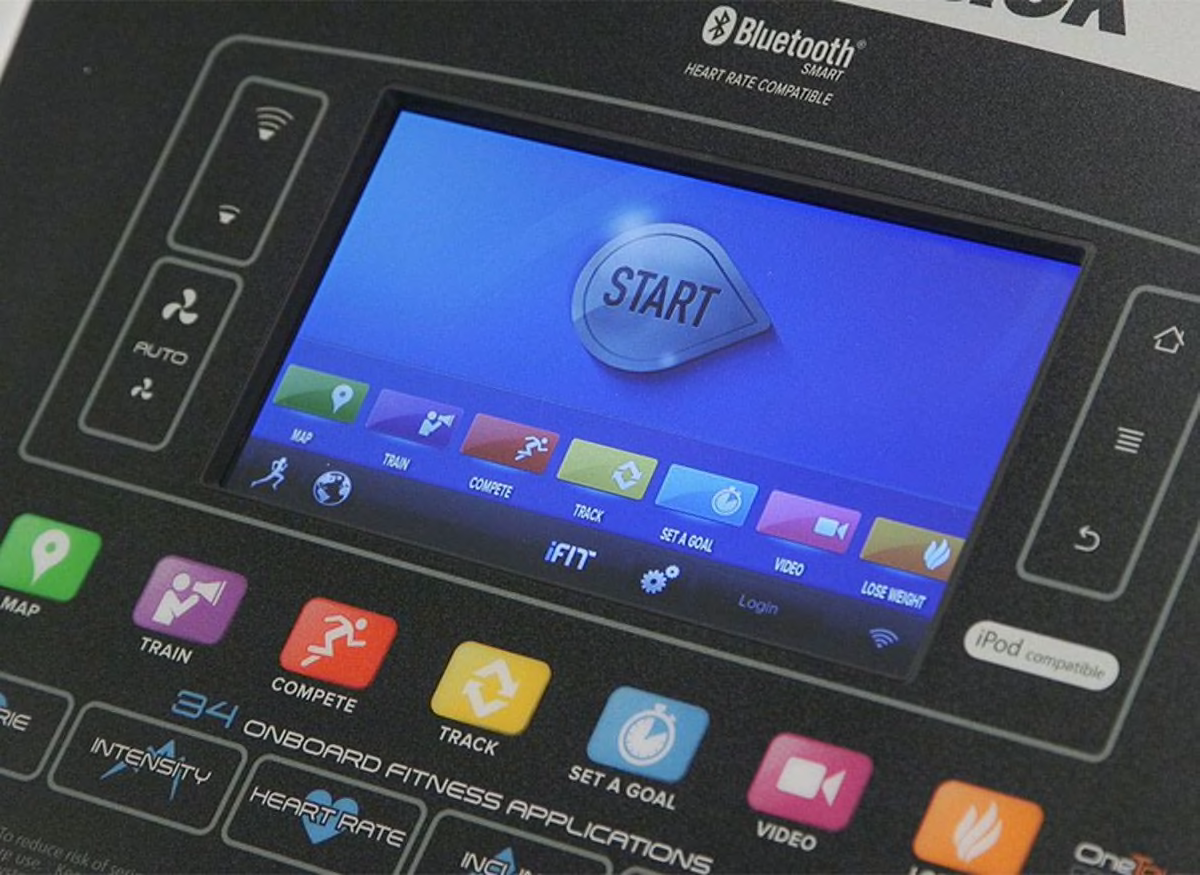
Controls and Consoles
Look for well-labeled, intuitive controls: up/down buttons, quick one-touch speed and incline buttons, and large, easy-to-read displays that show multiple functions (time, speed, heart rate, incline) at once. Some models come with dials that users can spin to quickly and easily adjust speed and incline. Avoid models with poorly designed controls and displays.
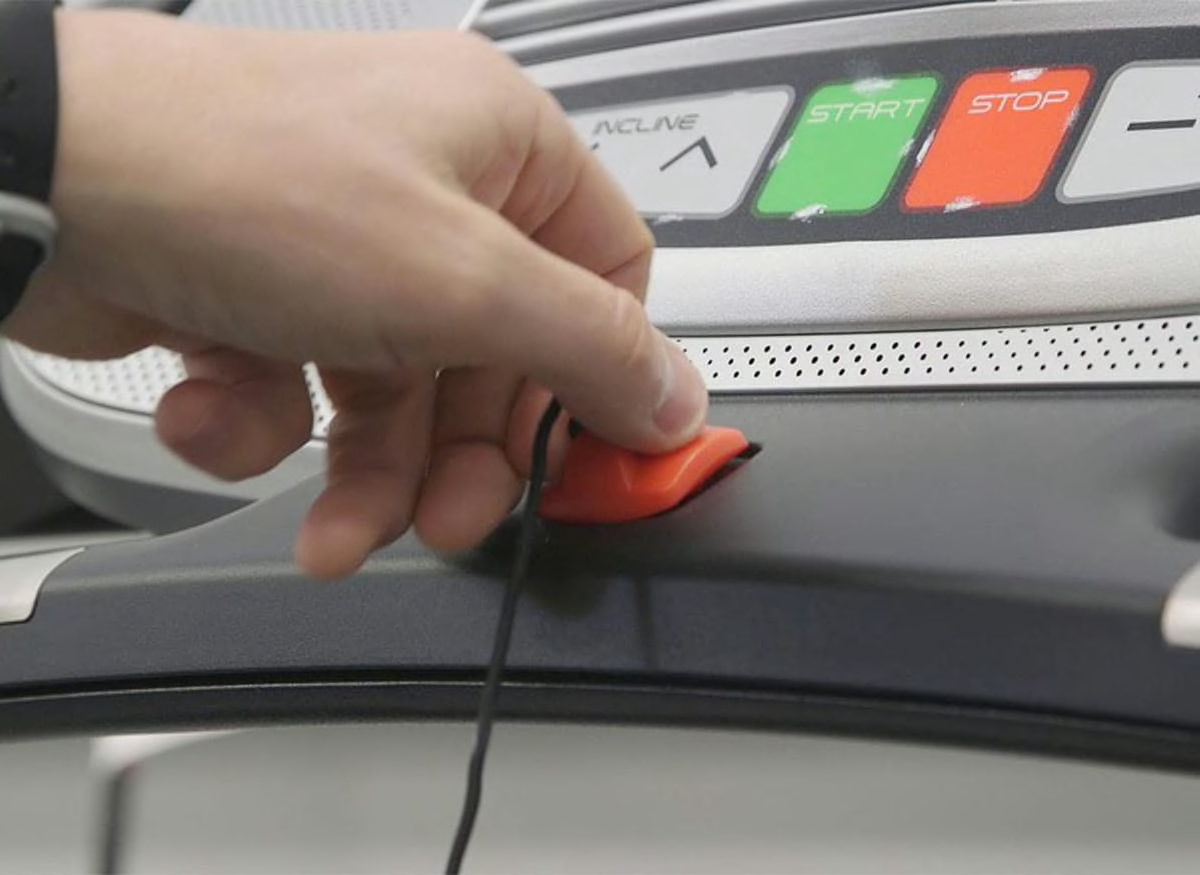
Tethered Safety Key
All models have a safety key. You need to insert a key into the console to start the treadmill. The key comes attached to a long cord, with a clip to attach to your clothing. If you were to slip and fall, the cord would pull out the key and stop the treadmill belt. It can also be removed and stored separately to keep children from accidentally starting the machine.
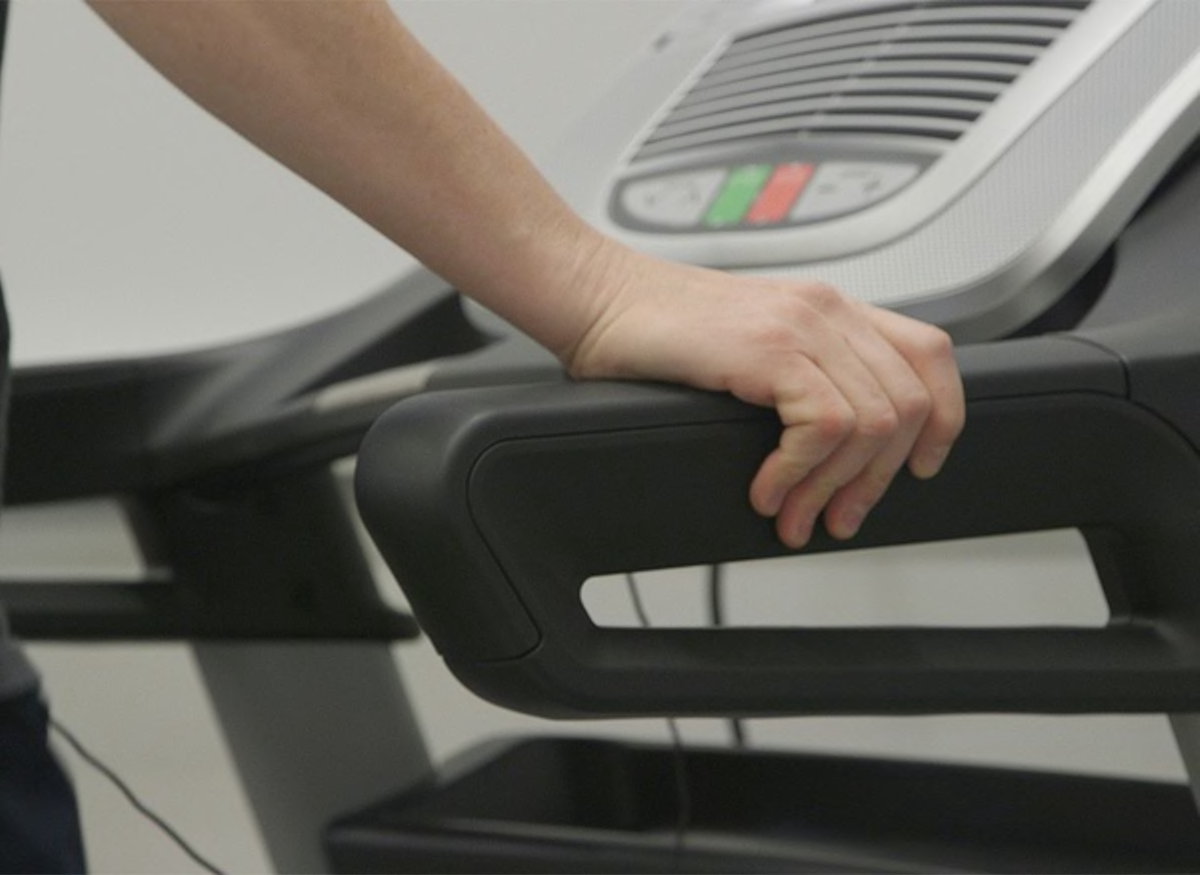
Handrails and Footrails
Most treadmills have handrails at the front and sides of the machine. Padding is a plus. While handrails can be useful for those who need extra stability, make sure the rails don’t impede your natural arm motion during exercise. Look for wide and flat footrails alongside the moving belt. Ample footrails make it easier to get on and off the treadmill safely. A footrail covered with a nonslip material is best.
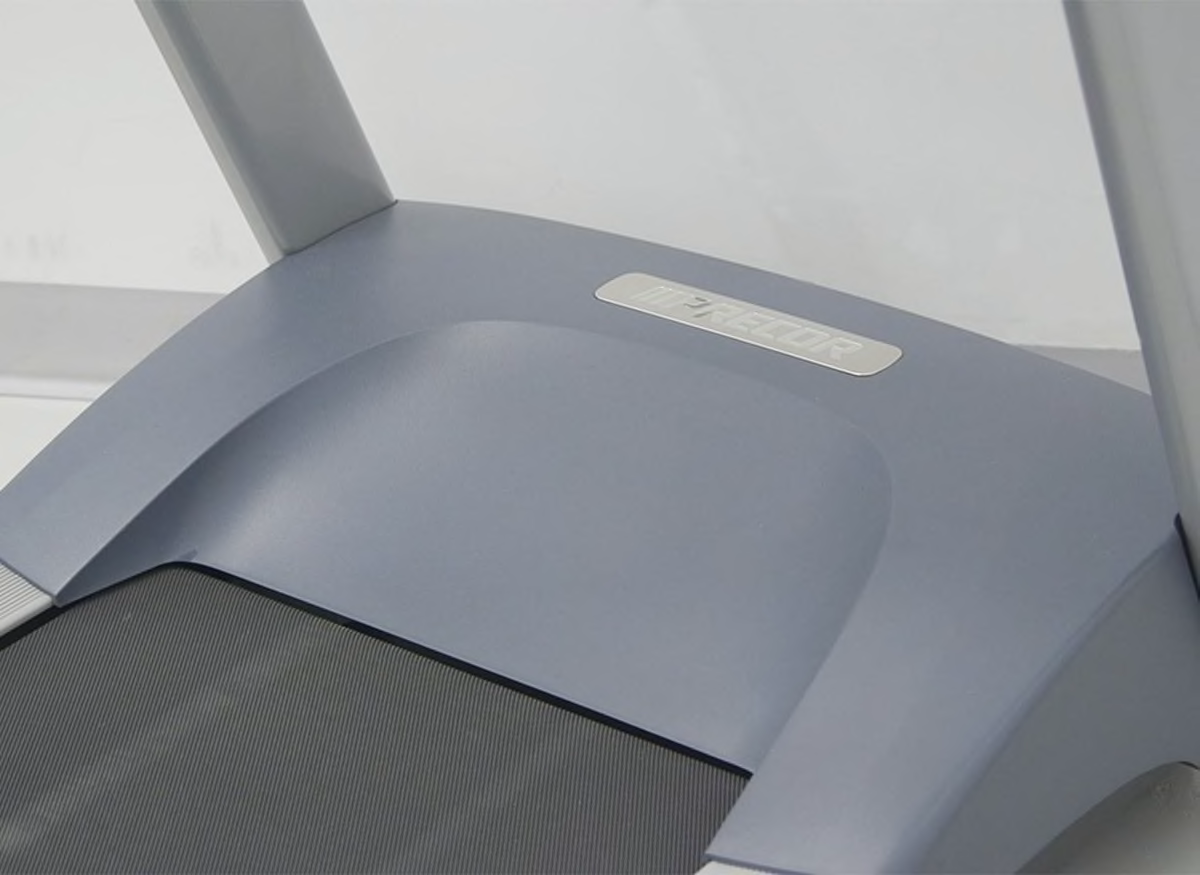
Motor Housing
The treadmill’s motor housing should be set far enough forward so that it doesn’t get in the way of your feet when you’re exercising. A concave shape to the motor housing that tapers to the front of the belt is ideal.
Heart Rate Monitor
A chest strap heart rate monitor is typically not included with treadmills that cost less than $1,000, though most treadmills usually have a handgrip heart rate monitor. A chest strap monitor is convenient, can give you a more accurate and consistent reading than hand grips, and allows you to monitor your heart rate without having to reach for the hand grip sensors. While a heart rate monitor helps you track the intensity of your exercise, don’t rely on it for reliable medical info.
Controls and Consoles
Look for well-labeled, intuitive controls: up/down buttons, quick one-touch speed and incline buttons, and large, easy-to-read displays that show multiple functions (time, speed, heart rate, incline) at once. Some models come with dials that users can spin to quickly and easily adjust speed and incline. Avoid models with poorly designed controls and displays.
Tethered Safety Key
All models have a safety key. You need to insert a key into the console to start the treadmill. The key comes attached to a long cord, with a clip to attach to your clothing. If you were to slip and fall, the cord would pull out the key and stop the treadmill belt. It can also be removed and stored separately to keep children from accidentally starting the machine.
Handrails and Footrails
Most treadmills have handrails at the front and sides of the machine. Padding is a plus. While handrails can be useful for those who need extra stability, make sure the rails don’t impede your natural arm motion during exercise. Look for wide and flat footrails alongside the moving belt. Ample footrails make it easier to get on and off the treadmill safely. A footrail covered with a nonslip material is best.
Motor Housing
The treadmill’s motor housing should be set far enough forward so that it doesn’t get in the way of your feet when you’re exercising. A concave shape to the motor housing that tapers to the front of the belt is ideal.
‘How We Test Treadmills’ Video
How We Test Treadmills
At CR, we know just how important exercise is to a healthy life. To help you get the best home exercise equipment, we test and rate treadmills from a variety of companies, including Bowflex, Horizon Fitness, Landice, LifeFitness, Nautilus, NordicTrack, Peloton, Precor, Sole, True, and Xterra.
Our tests focus on ease of use, construction quality, ergonomics (or how well the treadmill accommodates users’ needs, including the size of the belt and the design of the footrail and handgrips), exercise range, and user safety. Though the term sounds odd, exercise range is an important one; it indicates whether a machine is suitable for a variety of fitness levels. And it suggests whether a machine might be easier to share among multiple people in a household, for example, or as your level of fitness and health changes over time. To measure exercise range, we factor in the range of treadmill speeds, incline range, stability, cushioning, and more.
Our user safety tests evaluate the accessibility of the emergency stop button, the workings of the safety key, the security of folding models, and more.
We also perform a durability test using a custom test fixture built by CR test engineers. We have two of these rigs—dubbed Johnnie Walker Red and Johnnie Walker Black—each consisting of a giant rotating metal drum covered in “legs” with “feet” simulating a runner’s shoe running along each treadmill. For full-sized treadmills, this is a 25-hour test, where the machine runs in cycles of 1 hour on and 30 minutes off, simulating half a year of use. For under-desk treadmills, we run this test for 12 hours.
All these test results are compiled into our full treadmill ratings and recommendations.
Buying Guide Video
For more, watch our video below.
Treadmill Brands
Horizon Fitness is based in Cottage Grove, Wis. Its product line also includes ellipticals and exercise bikes. Available in sporting goods stores and online, its treadmills range from $650 to $2,000.
Based in Randolph, N.J., Landice makes midrange to high-end treadmills, ellipticals, and exercise bikes for the home and commercial markets. Available in specialty fitness stores, Landice treadmills range from $4,800 to $6,300.
Life Fitness home treadmills are available at specialty fitness retailers and through the manufacturer’s online store. Models range from $2,540 to $11,000.
LifeSpan Fitness products are manufactured by Health and Fitness, which is based in Park City, Utah. Its product line also includes ellipticals and exercise bikes. Home fitness treadmills range from $450 to $2,000.
NordicTrack is part of the Icon Fitness group, which is one of the largest manufacturers of fitness equipment in the world. The brand offers a variety of exercise products, including ellipticals, exercise bikes, and steppers. Treadmills range from $1,200 to $4,500.
Precor is part of the Amer Sports Corp., based in Finland. Its treadmills can be purchased nationwide at specialty fitness stores. Prices range from $2,400 to $12,000.
Made by Icon Fitness, ProForm offers exercise equipment at lower prices than those of most other manufacturers. Its product line also includes ellipticals and exercise bikes. Treadmill prices range from $600 to $2,300.
Owned by Dyaco International of Taiwan, Spirit has been in existence for more than 25 years. Its treadmills are sold nationwide in specialty fitness stores. Prices range from $1,900 to $3,300.
Based in St. Louis, True’s product line also includes ellipticals and exercise bikes. Treadmills range from $2,700 to $7,400.
Other brands of note: Bowflex, Nautilus, Peloton, Sole Treadmill, and Xterra.



























